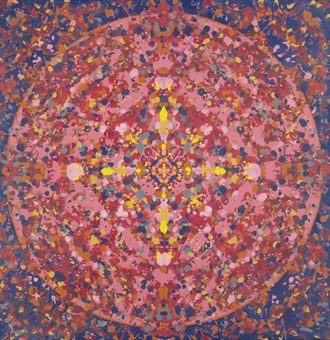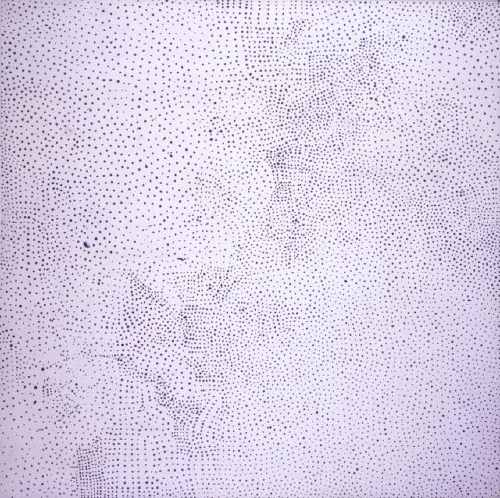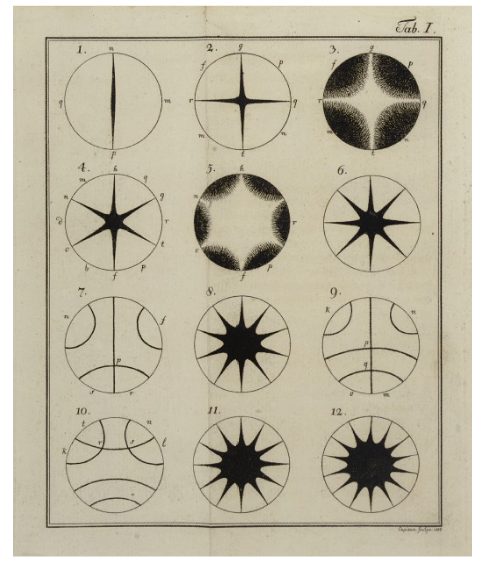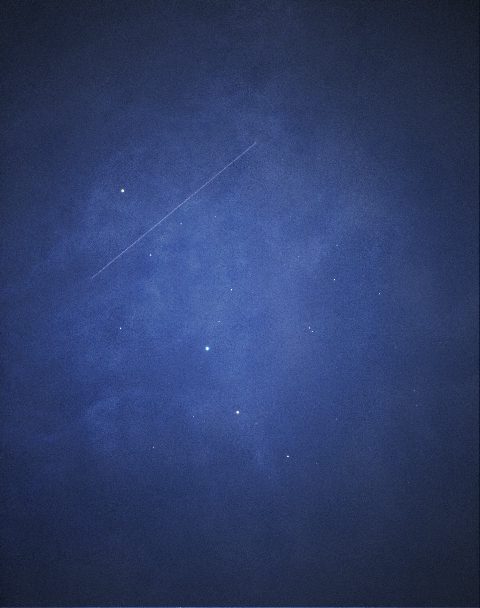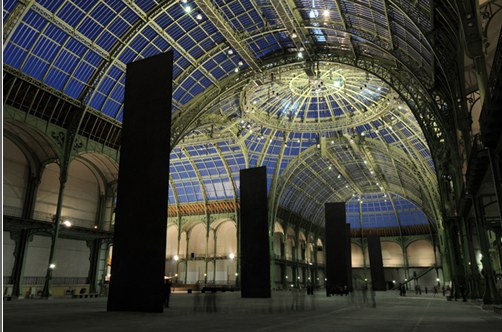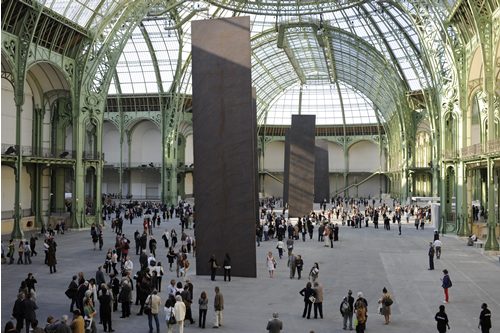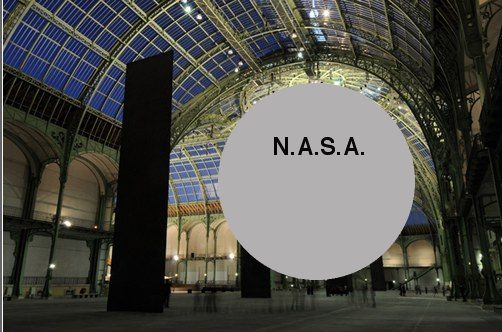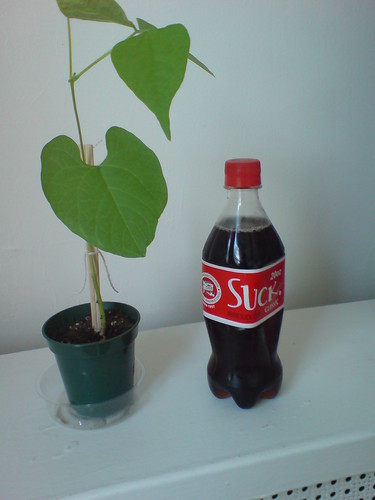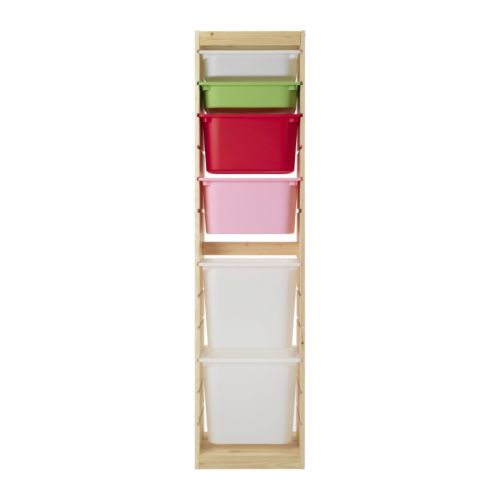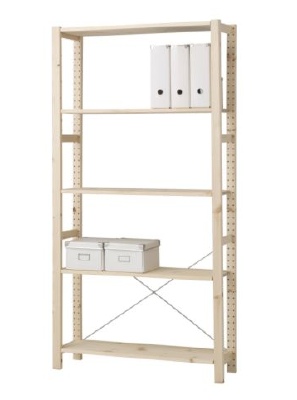The Palomar Observatory Sky Survey was sponsored by the National Geographic Society. Over ten years, between 1948 and 1958, astronomers at Cal Tech's Palomar Observatory used a 48-inch Schmidt Telescope to create the most advanced sky survey ever, a comprehensive portrait of most of the visible universe as seen from the Northern Hemisphere. [Actually, the survey detected objects of a magnitude of +22, one million times fainter than the limits of human vision.]
When completed, the 935 pairs of glass plates, one filtered red, and one blue, were compiled into the Sky Atlas, which was published over the years on paper, glass, and film.
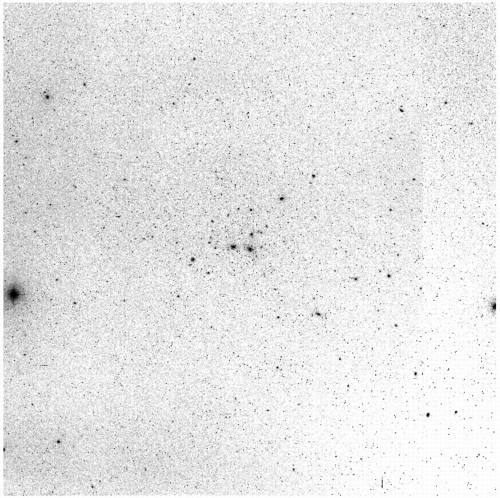
I first found out about the NGS-POSS about ten years ago I was visiting a physicist friend at her university office. There was a reception in the department library, and we wandered off to explore, and ended up in a rear stairwell, where she showed me a large, grey, metal flatfile on a landing. Inside each drawer was a stack of large, slightly curled photographs. They were printed in the negative; instead of glowing stars on a black sky, each page was light silver, flecked with linty black specks. There was a string of numbers--right ascension and declination, it turned out--on the top of each print.
Two print versions of the POSS were published, one 14x17" format in the 1950's and 1960's, and another, 14x14", in the 1970's. The version I saw was the former. Paper turned out to be the least useful format for astronomical analysis; glass and film were much better, and since the POSS plates were scanned into the Digitized Sky Survey in the 1990's, the print version of the Sky Atlas is obsolete by several generations.
So besides finding an extant copy gathering dust and taking up space in a university physics department somewhere, the logical [sic] thing to do is to print an entirely new set from the original plates.
Two sets of original plates were created, one to work from, and the other to be "stored, unused, in the dome of the 200-inch telescope on Palomar Mountain, where it will be available in the even that the plates in Pasadena should be damaged or destroyed by some catastrophe."
At least that's where they were in 1963 when R.L. Minkowski and G.O. Abell wrote about the NGS-POSS for K. Aa. Strand's Basic Astronomical Data, Vol. III of Stars and Stellar Systems. They described in some detail the characteristics of the Survey, as well as the making of the prints. [Strand's compendium also includes descriptions of earlier sky surveys, which I might get to later.] After the jump, some excerpts from Minkowski & Abell's paper, pp.481-6, on the production of the Sky Atlas

